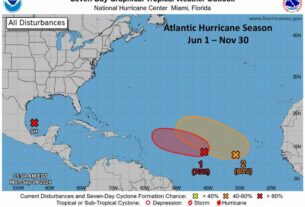**** Info via Environment Canada
1816: The year without a summer
The weather of the year 1816 was a recurring topic in the Quebec Gazette due to the exceptionally cold temperatures. Constant cold and plenty of snowfall had already plagued the spring. It snowed and rained for the first three weeks of May. People shivered with daily temperatures hovering between 4 and 10 °C. Farmers worried about late seeding. Some planted crops in the last week of May, not knowing that the worst was yet to come.

Marketplace, Quebec City’s Upper Town, 1830. Artist: Robert Auchmuty Sproule Photo: McCord Museum.
Early June was exceptionally cool: June 6 and 7 saw temperatures that remained below freezing and snowfall totalling more than 30 cm. In the Quebec City area, people wore winter coats, tuques and mittens. Flocks of unknown birds landed on ship masts; others fell frozen stiff in the streets. Some trees lost their small leaves and some farm animals, especially sheep, died of cold. On June 9, the skies cleared, but the wintery backdrop remained a mere 12 days before the summer solstice!
Farmers who still had reserves, finally planted their crops over a month late, but the cold weather in July didn’t help growth. The sun was blocked “by spots”—actually veils of volcanic ash. August saw 12 days of rain followed by several days with frost, which destroyed wheat and oat crops, but also vegetables like peas, potatoes, beans and cabbage. In order to feed the population, boats arrived from Europe and elsewhere with provisions of flour and wheat.
The cause: the eruption of Mount Tambora
From April 5 to 17, 1815, the eruption of Mount Tambora in Indonesia spewed a column of ash up to an altitude of 44 km. It was one of the two most powerful volcanic eruptions in history, more than 10 000 times as powerful as the nuclear explosion over Hiroshima. This eruption helped cool the atmosphere all around the globe, causing a “year without a summer” in many areas of the world. The ash in the stratosphere, which blocked a portion of the sun’s rays, took time to fall to the surface and actually caused four cold years (1816-1819).
Aerial view of Tambora Volcano.
While volcanic ash doesn’t always have such a dramatic effect on our seasons, it is a significant hazard for aviation. This is why the International Civil Aviation Organization created the Volcanic Ash Advisory Centres (VAACs) throughout the world, with one of those located in Montréal, Quebec. The centre is responsible for the continuous monitoring of volcanic activity in its area of responsibility, mainly Canada and Greenland, and for issuing advisories for the presence of volcanic ash in its airspace.
VAACs area of responsibility. The VAAC in Montréal also provides operational support and back up to the other VAACs worldwide.




